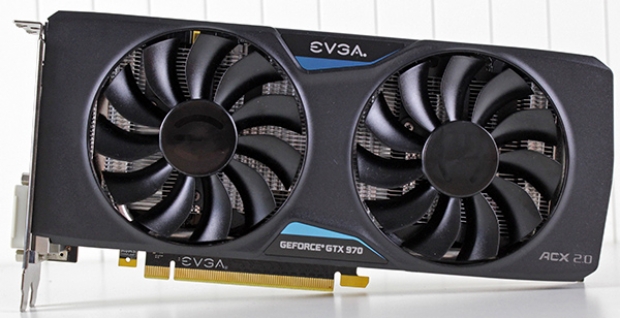Nvidia recently released two new graphics cards based on its latest Maxwell GPU architecture, with exceptional performance-per-watt. The Geforce GTX 970 and Geforce GTX 980 will replace the outgoing Kepler-based Geforce GTX 780 and Geforce GTX 780Ti.
Today we will take a look at SLI performance, we will try out a dual GTX 970 setup. One of the cards comes from EVGA and it's the GTX 970 Superclocked ACX 2.0. The second one comes from the house of Gainward and it is called the GTX 970 Phantom.
Since both work at similar clocks, they're a good choice for SLI. Of course, in an SLI setup the faster card will have to downclock and match the clock of the slower card.
The GTX 970 Phantom works at a base clock of 1152MHz, while the reference GPU base clock is 1050MHz. Nvidia's GPU Boost 2.0 takes the average GPU clock to 1178MHz for the reference GPU and to 1304MHz for the Phantom card.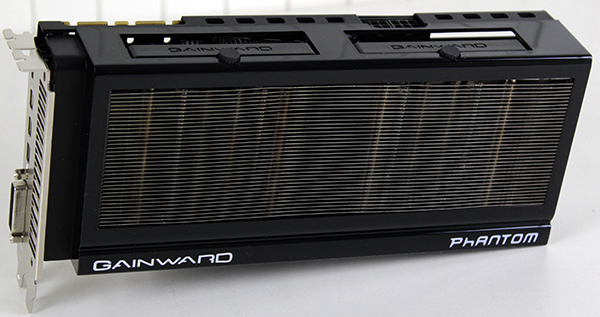
The GTX 970 SC ACX 2.0 works at a base clock of 1165MHz, while Nvidia's GPU Boost 2.0 takes the average GPU clock to 1317MHz.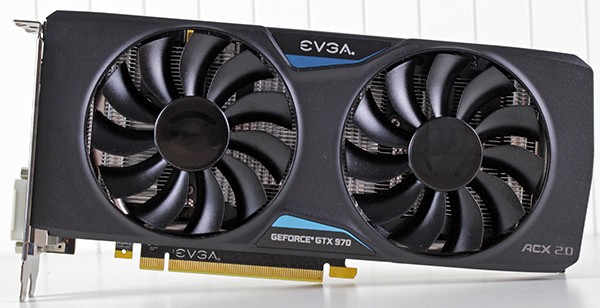
EVGA and Gainward did not change the memory clock and the 4GB of GDDR5 memory is clocked at 1750MHz (7000MHz effective) on both cards, providing up to 224.3GB/sec of peak memory bandwidth.
Nvidia designed Maxwell to deliver more efficiency and performance. The GTX 980 and GTX 970 are vastly more efficient than their Kepler-based predecessors. The GTX 980 has a TDP of 165W, while the GTX 970 is rated at 145W. The old GTX 780 Ti and GTX 780 have a TDP of 250W. Just like their predecessors, both new cards are capable of delivering smooth frame rates at resolutions up to 2560x1600. In case you are planning to build a 4K capable rig, two GTX 970 cards should be enough for good frame rates and anti-aliasing in demanding titles.
GTX 980 and GTX 970 are based on the 28nm GM204 GPU. The GPU packs 5.2 billion transistors and has a die size of 398mm2. The GTX 980 comes with 2048 CUDA cores, while the GTX 970 has 1664 CUDA cores enabled. Three out of sixteen streaming multiprocessors, which each hold 128 CUDA cores, are disabled on the GTX 970.
With the GTX 980 and GTX 970, Nvidia also decided to launch a few new technologies there were not employed in the first incarnation of Maxwell on the GTX 750 series. Voxel Global Illumination, Multi Frame Anti-aliasing and Dynamic Super Resolution are built around old concepts, but they do a good job at reinventing them. Of course, DirectX 12 is supported on all Maxwell cards.
We had no problems setting up the system. We used the latest available driver (344.07) and the control panel immediately recognized we had two GTX 970 cards in our rig. The 'Configure SLI' section allowed us to activate SLI. The window displaying active display outputs indicated that the monitor was connected via the DVI port.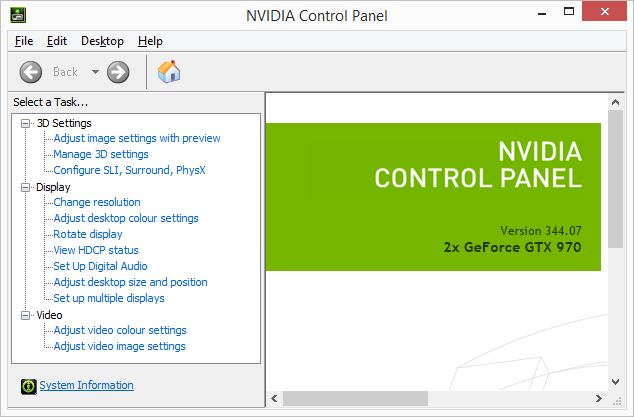
The Gainward GTX 970 Phantom has three DisplayPort connectors, while the EVGA GTX 970 Superclocked ACX 2.0 has one DisplayPort output.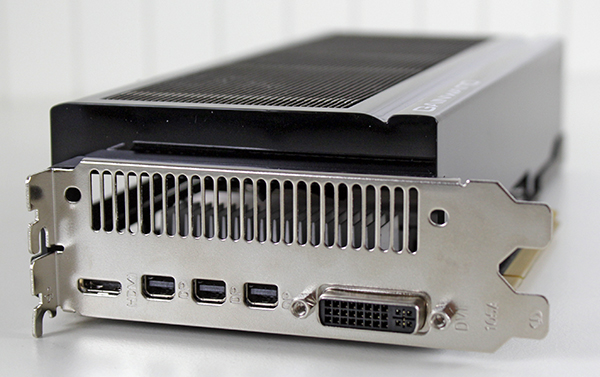
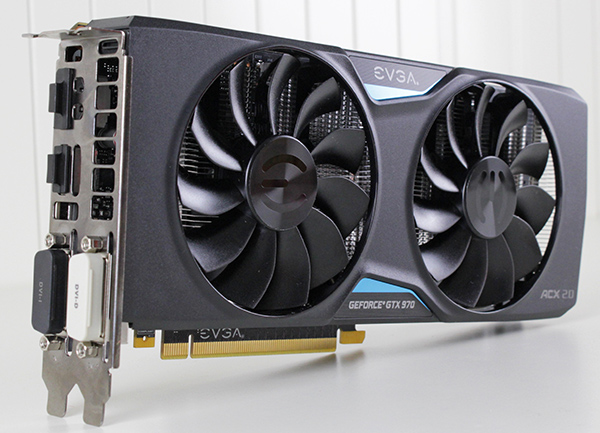
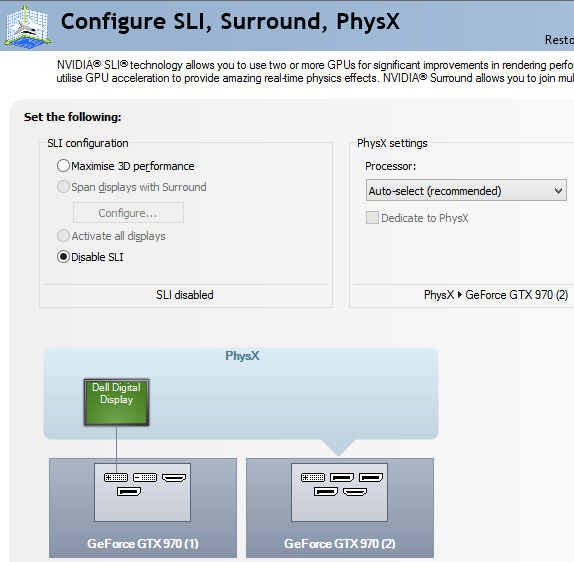
In the Fire Strike Extreme test our two GTX 970 cards in SLI got to the top of the chart. The SLI setup yielded a 73-percent performance uplift over a single GTX 970 Phantom card. Maxwell usually performs well in 3DMark tests, so the GTX 970 easily beats the GTX 780 Ti. However, in the real world the old GTX 780 Ti is faster than a single GTX 970 card. Game tests reveal that this is not the case in all titles and in some tests the GTX 970 SLI setup ends up faster than a GTX 780 Ti SLI setup.
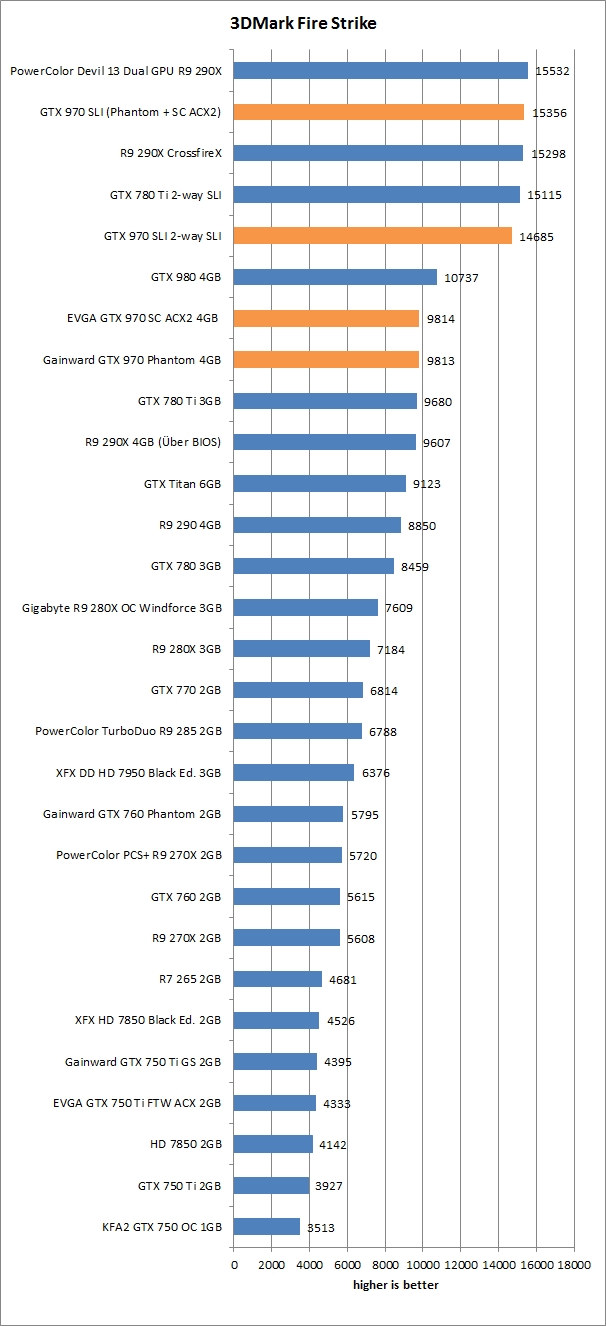
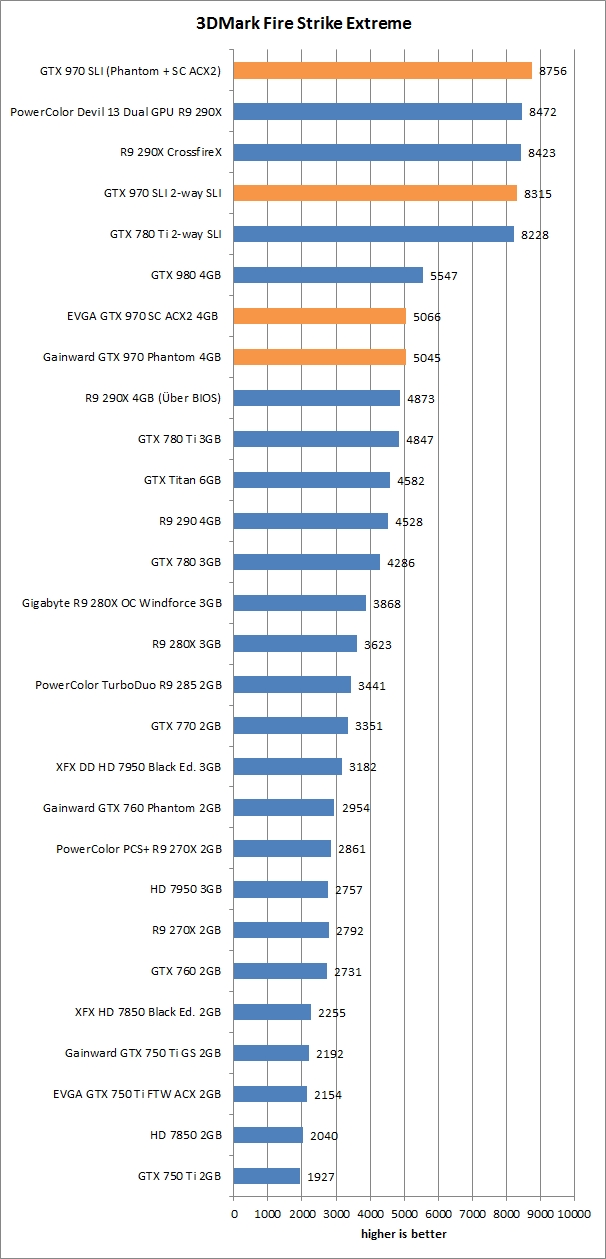
In Crysis 3 the GTX 970 SLI delivers a 89-percent gain compared to a single card. Although the GTX 780 Ti is better than a single GTX 970, the GTX 970 SLI ends up faster than the GTX 780 Ti SLI. We saw the same trend in other titles.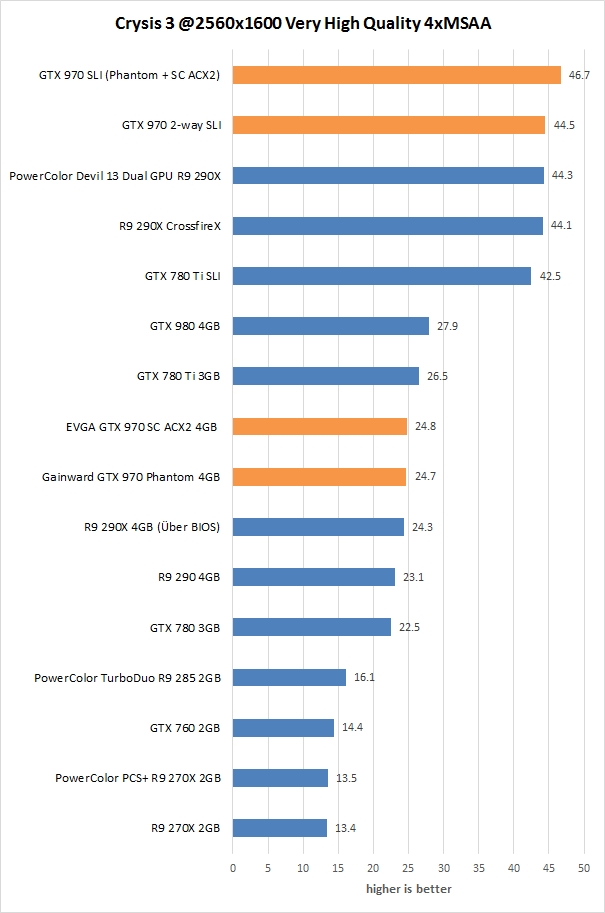
In our Thief test, the different between the GTX 970 SLI and a single GTX 970 card was not as big, but we still see the GTX 970 SLI delivers a substantially better result (13%) than the GTX 780 Ti SLI configuration. Although GTX 780 Ti fairs better in single GPU tests, the GTX 970 SLI still outpaces the GTX 780 Ti SLI.
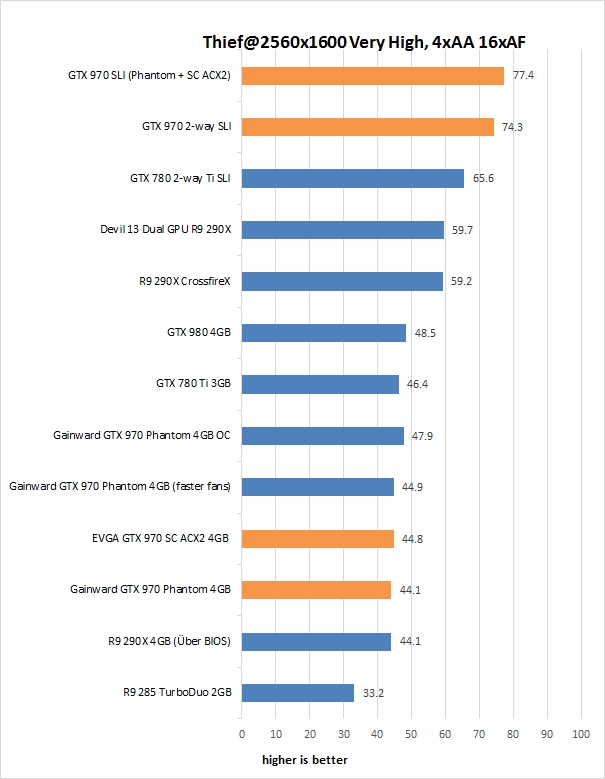
In Sleeping Dogs the GTX 970 SLI delivers excellent scaling, yielding a 95-percent boost compared to a sngle card. That helped the GTX 970 Phantom i Superclocked SLI setup make it to the top of the chart.
However, Sleeping Dogs also works better with an GTX 780 Ti SLI setup than a GTX 970 SLI setup. The difference is relatively small both in SLI and single GPU tests.
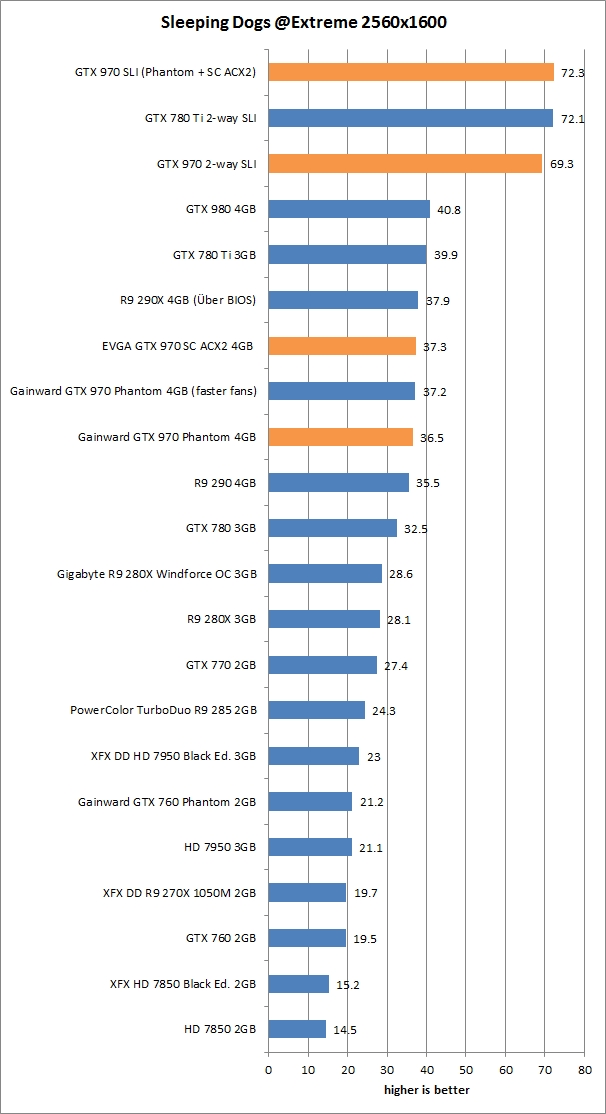
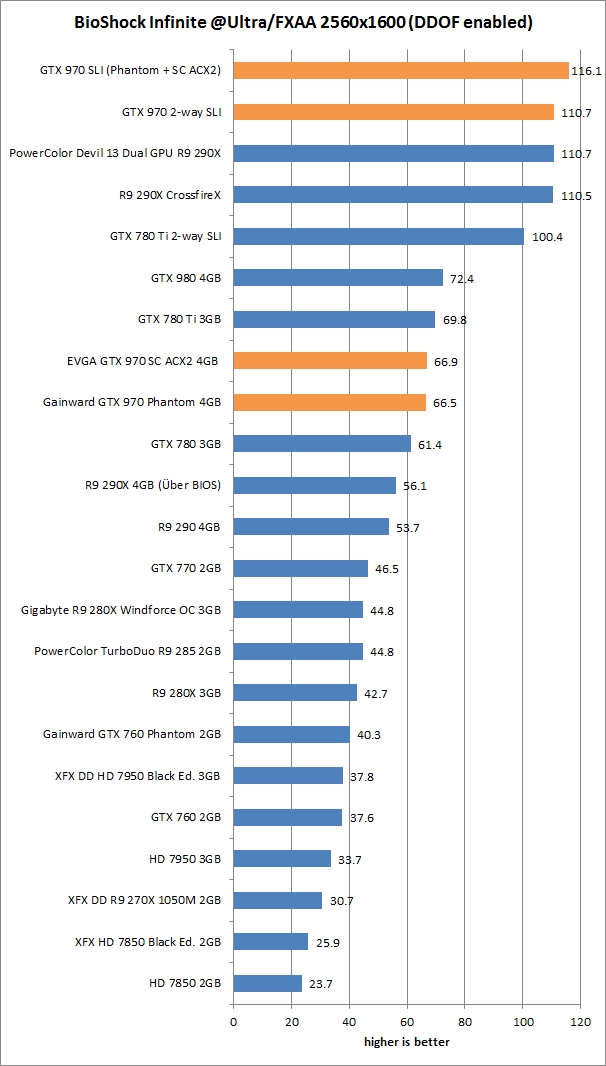
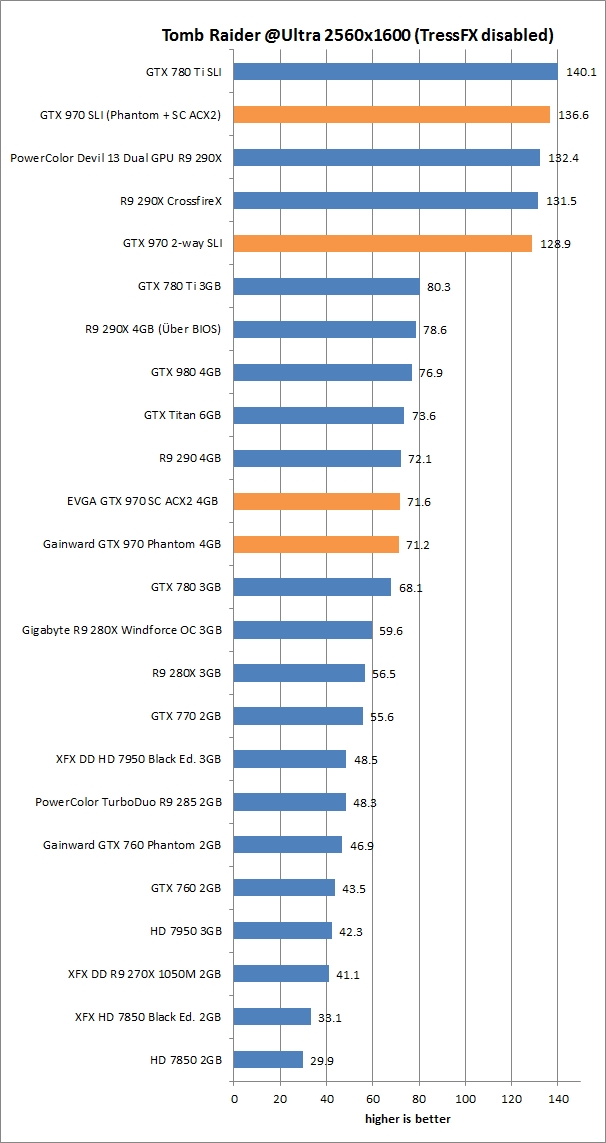
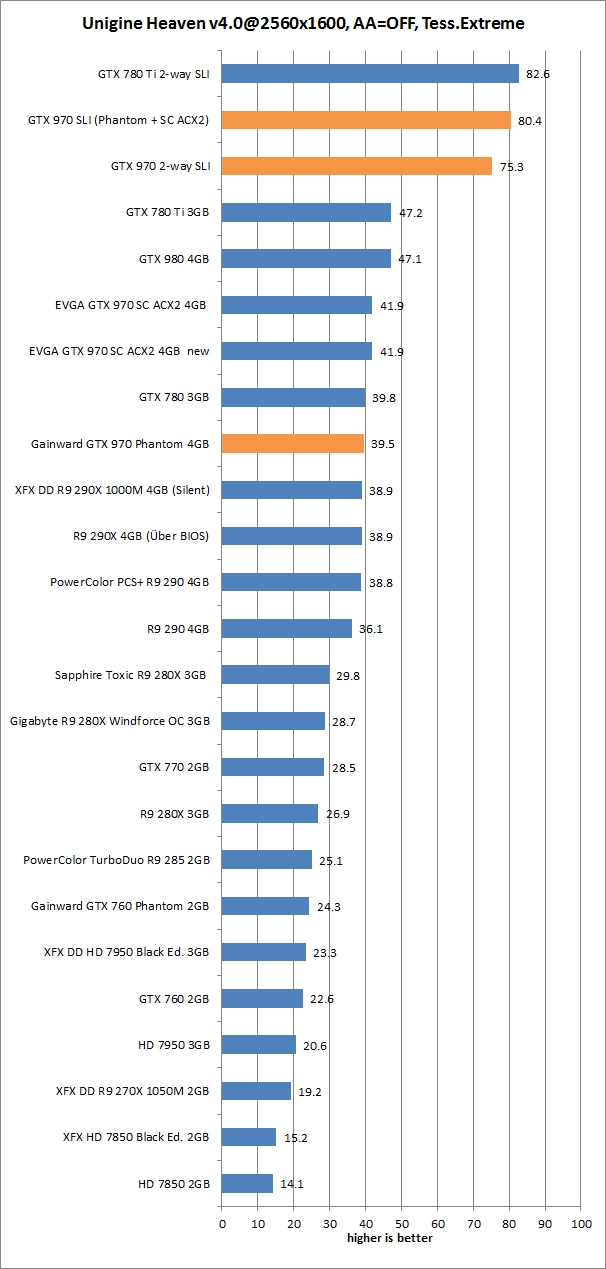
The Phantom cooler is two and a half slots wide and it performs well. EGA's ACX 2.0 cooler features bigger and faster fans than its predecessor. At 80% speed the fans hit about 2800RPM, while the Phantom card ends up at 2188RPM. There is a noticeable difference in temperatures, as the SuperClocked card reaches 73 degrees Celsius, while the Phantom hits 80 degrees.
As far as noise is concerned, buth cards are audible at 80% fan speed, but neither is too loud.
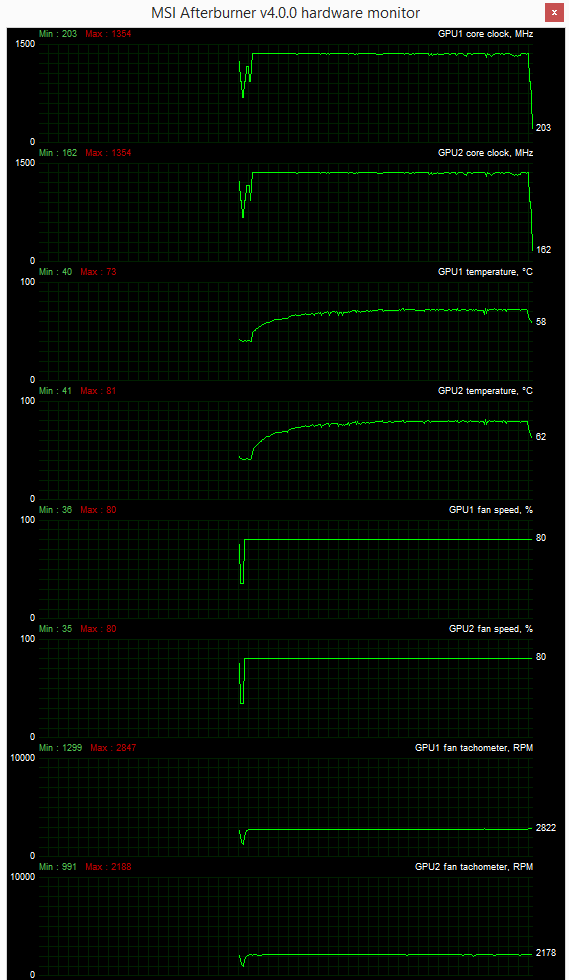
Our GTX 970 SLI (Phantom + SC ACX 2.0) setup proved very efficient. Despite the fact that both cads are factory overclocked, the max system consumption hit just 500W, a full 100W less than the GTX 780 Ti SLI.
This is a good result and it is good news for enthusiasts on a budget, as it is possible to run one or two fast cards even on relatively weak PSUs, so few people will have to upgrade their power supplies if they choose to go SLI.
The GTX 980 is for enthusiasts looking to buy the best single-GPU card on the market, while the GTX 970 is for value minded gamers who want the best bang for their buck.
The Maxwell GM204 GPU proves that high-end cards do not have to end up with a huge TDP. Nvidia’s new architecture offers exceptional performance-per-watt and the GTX 970 pumps out just 145W under load. In many tests a single GTX 970 card can outpace the old GTX 780 with a TDP of 250W. Although a single GTX 780 Ti card usually ends up faster than a single GTX 970 card, the tables are turned in SLI.
Overlocking is another interesting option. Bear in mind that we ran our tests on two factor overclocked cards. They offered smooth gaming at resolution 2560x1600, but we did not run any 4K tests. Judging by the results, the cards should have no trouble coping with 4K/UHD resolutions, either.
Nvidia's drivers worked well in SLI and there is no point in wasting time talking about Maxwell and efficiency, since we covered the matter on a number of occasions.
There is nothing holding us back from recommending a GTX 970 SLI setup, or a single card that could be upgrade at a later date. Our GTX 970 SLI tests proves that adding a second card to the mix offers a reasonable upgrade path. Relatively low power requirements also add to the value, as a GTX 970 SLI setup does not require a pricey high-end PSU.

